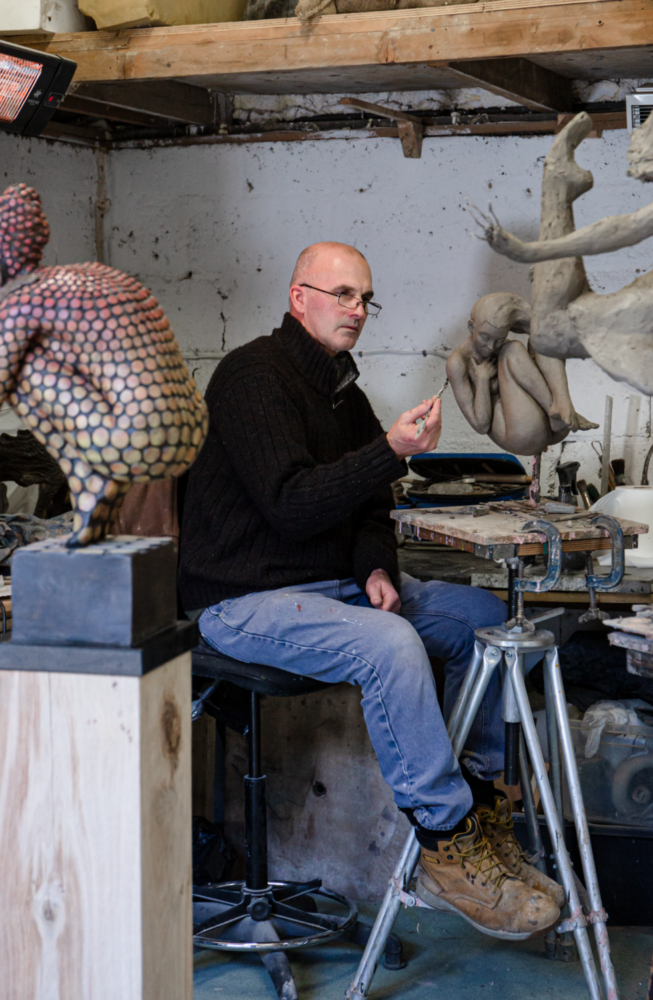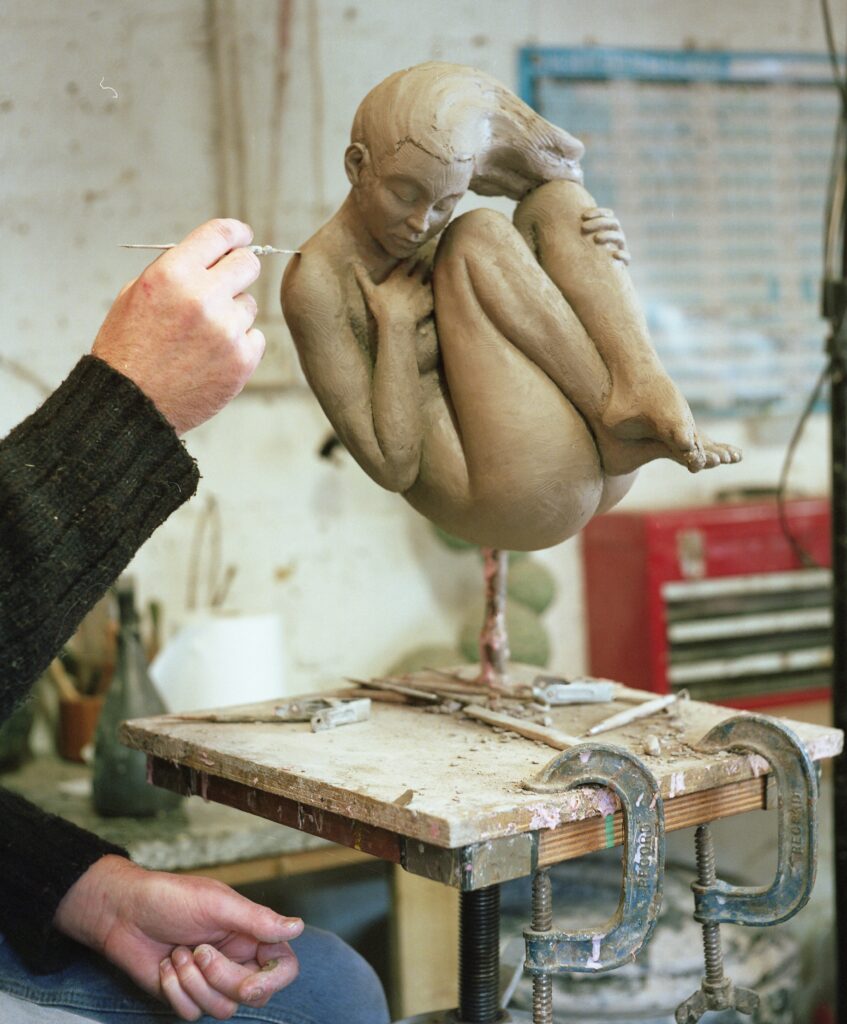Working in clay, Jonathan enjoys the challenge of creating from both the real and imagined. Through his close observation and manipulation of materials, Jonathan is able to create detail and texture or surface bas-relief on his sculpture, which are hand finished and painted to accentuate the relief.
Working in clay, Jonathan enjoys the challenge of creating from both the real and imagined. Through his close observation and manipulation of materials, Jonathan is able to create detail and texture or surface bas-relief on his sculpture, which are hand finished and painted to accentuate the relief.

Following the initial idea and sketches, a metal armature is constructed to the desired pose which is quickly covered in clay. It is at this stage that Jonathan gets a real sense of the form before gradually refining the figure to a ‘finished’ stage. Depending on the intention of the piece, he then begins meticulously cutting into the figure’s surface so that a new detailed relief is created which will, when the sculpture is cast, be highlighted with painted colour.
Bronze sculpture involves the ‘lost wax process’ – it is highly skilled, complex, time and labour intensive, which causes bronzes to be more expensive. Unlike a bronze resin, each edition is totally unique and there is a depth of colour, which you can’t achieve in a resin, and this improves with age. They are much heavier, cold to touch and you can guarantee the sculpture will be around for numerous generations!
Bronze resin sculpture is also known as ‘cold cast bronze’ – it’s made from a mixture of bronze powder and resin and the casting is faster and less expensive than casting in bronze.
The sculpture is lighter but can break more easily (although easily repaired) and the surface will dull over the years but it can sustain being outside for long periods of time.
These sculpted figures hold, on their surface, unlimited canvasses which Jonathan can position as he wishes in order to express our relationship with nature and the world.
